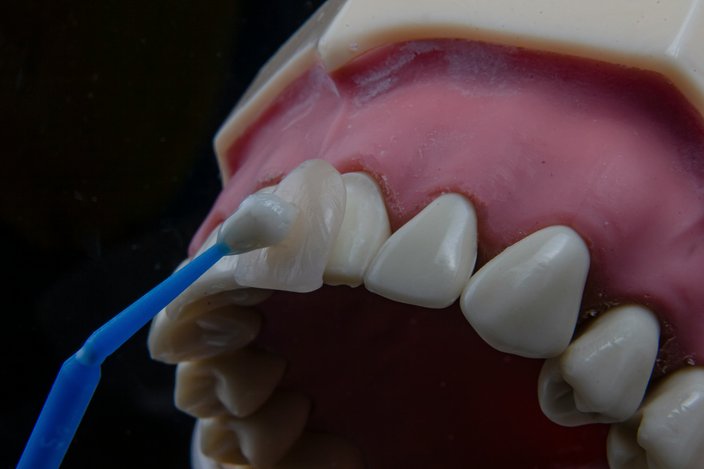Aimee Lou Wood has garnered recent attention, not just for her acting chops in the third season of the HBO series “White Lotus” but also for her imperfect teeth.
Wood characterized her decision to keep her natural teeth as “rebellious” on Vogue’s “The Run-Through” podcast.
MORE: Working out during the summer heat can be grueling. Here’s how to do it safely
“It feels so lovely,” Wood told People about the positive feedback she was getting about her smile. “A real full-circle moment after being bullied for my teeth forever. Now people are clapping in an audience.”
These days, Wood is an anomaly among celebrities who sink small fortunes into getting perfectly aligned, white teeth. The rich and famous have been buying themselves mouthfuls of veneers, porcelain covers sealed to the front of teeth.
The dental veneer industry – estimated to be $2.3 billion at the end of 2022 – is projected to double by 2031, according to reporting in GQ.
But not all veneers are created equal.
Last year, rapper Cardi B shared that she lost a veneer eating a bagel. And some celebrities have been called out for veneers that look too white, too big or … too whatever.
Cosmetic dentist Sara Hahn has risen to fame for her social media commentary on celebrities with veneers – or lack thereof – like in a TikTok video in which she pleads with pop star Sabrina Carpenter never to get veneers.
And more celebrities, like Wood, are stepping into the limelight for keeping their natural expression in what may be, as Vogue called it in April, a new “anti-veneer movement.”
For the uninitiated, here is an explainer about dental veneers:
Unlike a dental crown that covers the entire tooth, usually to repair and strengthen it after some kind of damage, veneers are purely cosmetic. They are made from porcelain or tooth-colored composite resin and bonded to the front surface of teeth to make them white, straight and uniform. The veneers cover up discoloration, gaps, chips and any other natural imperfections in teeth. Sometimes, people get them because they think their teeth are too small or are misshaped, according to the Cleveland Clinic.
Porcelain veneers are more translucent, like real teeth, than composite ones. They also cost more. Philadelphia Dentistry for Life prices porcelain veneers at $1,500 to $2,500 a tooth. But they can last as long as 15 to 20 years and are stronger and less likely to stain than other types of veneers.

 Ozkan Guner/UNSPLASH.COM
Ozkan Guner/UNSPLASH.COM
Porcelain and composite veneers are irreversible because the tooth enamel must be shaved away in order to apply them.
Composite veneers are less expensive – the price range for a single one is about $800 to $2,000. But their lifespan tends to be five to seven years. They also are less durable than porcelain ones.
Removable, snap-on veneers are becoming more popular in part, because they are less expensive than bonded veneers. The exact cost is hard to estimate but can range from hundreds of dollars to about $2,000 for a full set. Sometimes people use them for a special event, such as a photo shoot or a wedding, and they only last a few years at most.
Porcelain and composite veneers are irreversible because the original tooth enamel is shaved or etched to affix the veneer. This means that veneers eventually will have to be replaced. Sometimes, more intense dental work is needed. Temporary gum swelling and tooth sensitivity may occur after getting veneers.
Make sure to choose a reputable dentist for veneers, because things can go very wrong. For instance, a story in The Guardian describes how a dentist shaved off too much of a patient’s teeth, leaving her with little “pegs” and a misaligned bite when the veneers were applied.
(Except for the headline, this story has not been edited by PostX News and is published from a syndicated feed.)

